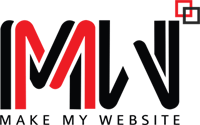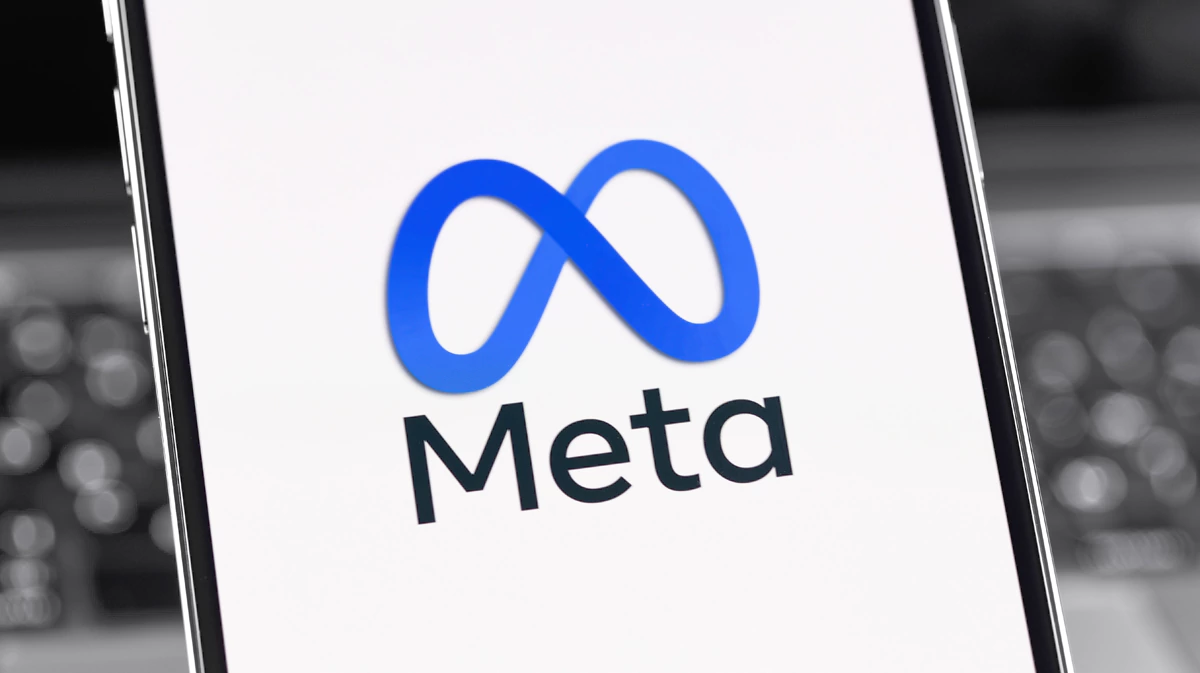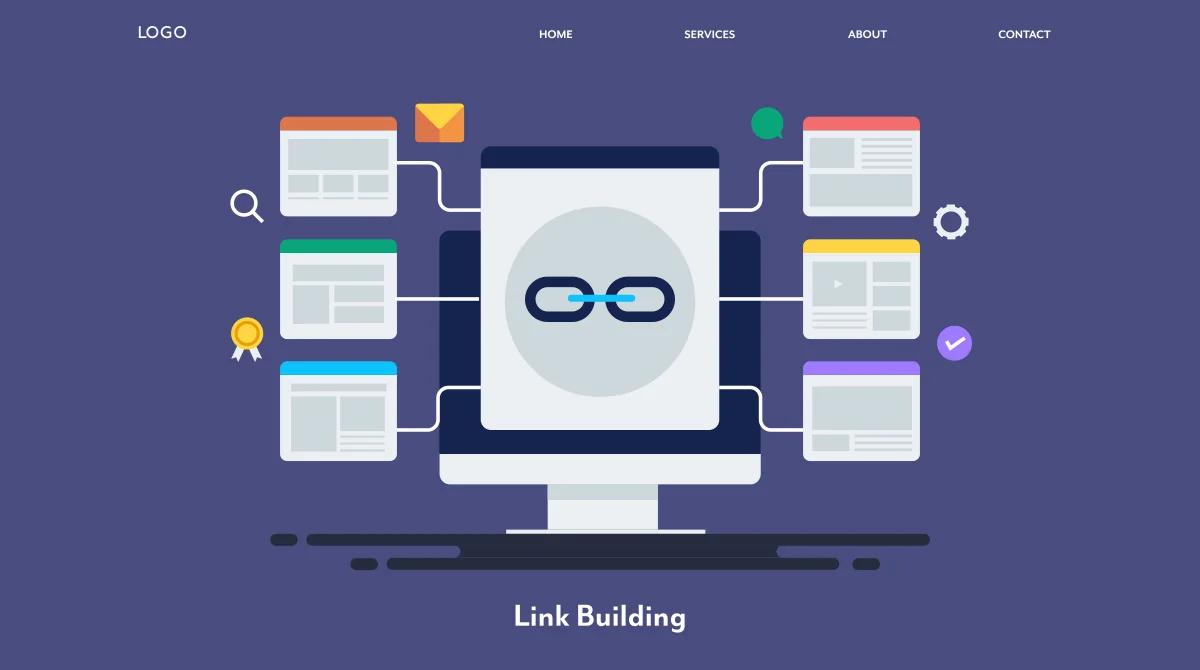Many businesses fail to integrate effective SEO in their content marketing, leading to scant customer attention and poor engagement. It is terrible to think that, as a company, you will devote your resources and time to useless content that no one will see while your competition quickly grabs the attention and shares the market. This guide walks you through how SEO is best in the world and what techniques can be used to ensure that your content is not just read but makes an impact. Find out how to build digital content that actually connects with the user, not just gets his attention.
What Is SEO Content?
SEO content combines strategic communication, technology optimisation, and user-focused value creation. This method differs from traditional content marketing because it requires a comprehensive strategy that meets the needs of both readers and search engine algorithms.
SEO content has changed significantly over the years. In 2010, the main focus was on keyword use and the number of backlinks. Now, it involves understanding user intent and semantic meaning and providing thorough value.
Key Transformation Metrics:
Recent research from MOZ and SEMrush indicates a significant change in how effective SEO content is assessed. Current search algorithms analyse content through various advanced criteria:
- The depth of information provided
- Metrics related to user engagement
- The thoroughness of topic coverage
- The display of genuine expertise
- The relevance of semantics and understanding of context
Why Is SEO Writing Important?
SEO writing has evolved from a simple marketing tool to an essential business strategy. Its value lies in enhancing online visibility and fostering genuine user engagement.
The strategic relevance includes:
- Generating organic traffic
- Establishing brand credibility.
- Offering a cost-effective marketing method.
- Developing a long-term audience
- Providing measurable business outcomes
Companies invest in SEO writing for various reasons:
- Achieving a higher return on marketing investment
- Supporting sustainable audience growth
- Enhancing brand positioning
- Creating a direct link with target audiences
Tips for Creating SEO-Optimised Content
Since digital technology keeps transforming fast, businesses need SEO-optimized content to build their online presence effectively. This section reveals proven methods to add value to your content using data so your target audience engages and converts online.
Find Your Primary Keywords
Keyword research is a sophisticated method that involves more than finding search terms. It requires a thorough understanding of user behaviour, market trends, and how search engines work. The main keywords connect with what users seek and the relevant content available. This process necessitates a detailed approach for effective identification and application.
Example: Nike’s Strategic Keyword Research
Nike’s method for keyword research showcases a comprehensive approach that turns keyword finding into a strategic tool for business insight. The company’s tactics illustrate how effective keyword research can enhance content development, marketing strategies, and online interaction.
Nike’s Comprehensive Keyword Research Strategy:
- Conduct extensive market research across various global sports sectors.
- Use advanced analytics and machine learning tools.
- Create detailed segments for keyword opportunities.
- Develop flexible keyword mapping for different products and user profiles.
- Apply real-time monitoring of keyword trends and adapt strategies accordingly.
Nike’s strategy goes beyond basic keyword research. By combining advanced technology with thorough market insights, the brand builds a responsive keyword environment that:
- Predicts new user search patterns.
- Engages with athletes of all performance levels.
- Adjusts to swiftly changing sports and fitness trends.
- Offers tailored content experiences.
- Supports digital marketing and product development initiatives.
Advanced Technological Integration:
- Machine learning algorithms for predictive keyword analysis
- Natural language processing for semantic search understanding
- Cross-platform data integration
- Real-time trend monitoring systems
- Predictive performance modelling
Related read: How To Conduct Keyword Research To Find The Perfect SEO Keywords?
Identify Content Gaps
Content gap analysis finds missing information and addresses unmet user needs. It helps identify opportunities to create valuable, relevant content that offers unique value.
Example: Amazon’s Content Gap Strategy
Amazon’s method for analysing content gaps has reshaped content intelligence. The company has shifted from reactive content research to a data-driven system that identifies and fills information gaps as they arise.
Amazon’s Key Steps for Content Gap Analysis:
- Use enterprise-grade content analysis tools
- Build machine learning systems for competitive evaluation
- Implement advanced tools for tracking user behaviour
- Develop flexible content creation processes
- Gather data from multiple sources for deeper insights
This approach creates a reliable system for finding and addressing information needs by:
- Turning user feedback into actionable content ideas
- Anticipating content demands before they become widespread
- Establishing flexible frameworks for content development
- Delivering precise, valuable information to meet user expectations
Strategic Intelligence Dimensions:
- Continuous competitive landscape monitoring
- Predictive users need identification
- Rapid content creation and deployment
- Cross-platform information integration
- Dynamic market understanding
Choose Your Secondary Keywords
Selecting secondary keywords is a detailed strategy that goes beyond adding related terms. It focuses on building contextual connections that enhance understanding, improve search rankings, and offer tailored content experiences.
Example: How Spotify Uses Secondary Keywords
Spotify refines its approach to secondary keywords, turning standard strategies into complex content networks. These networks reflect the diversity of user music interests and discovery habits.
Spotify’s Secondary Keyword Techniques:
- Map out relationships between music genres.
- Build linked content recommendation systems.
- Use machine learning to analyse user preferences.
- Group keywords based on shared meanings.
- Deliver personalised content tied to keyword relationships.
This strategy achieves the following:
- Reflects emotional and intellectual aspects of music exploration.
- Delivers tailored content for each user.
- Covers a wide range of user search intents.
- Develop flexible content recommendations.
- Shifts keyword research towards improving user experience.
Technological Innovation Dimensions:
- Advanced natural language processing
- Machine learning recommendation algorithms
- Semantic search optimisation
- User behaviour predictive modelling
- Cross-genre content mapping
Satisfy Search Intent
Understanding and meeting search intent involves carefully analysing users’ wants and delivering content that fulfils their needs. This approach prioritises creating meaningful experiences rather than just presenting information, ensuring users gain real value across different levels of engagement.
Example: HubSpot’s Approach to Search Intent
HubSpot has redefined content strategies by tailoring content to match user intent. Their method addresses a wide range of user requirements with precision and adaptability.
HubSpot’s Advanced Search Intent Strategy:
- Mapping user journeys across various stages
- Developing systems that recommend content based on user behaviour
- Using advanced behavioural analysis tools
- Designing tailored learning experiences
- Creating predictive frameworks for content planning
This strategy offers a thorough way to:
- Understand complex user needs for information
- Provide flexible learning opportunities tailored to individual users
- Shift content from static pages to interactive and engaging formats
- Deliver personalised value to users
- Support users through different stages of learning and discovery
Strategic Intelligence Dimensions:
- Psychological user motivation understanding
- Adaptive content recommendation
- Multi-stage user journey mapping
- Predictive learning experience design
- Personalised content generation
Create Quality Content
High-quality content serves as a strategic tool that goes beyond simply sharing information. It involves creating digital materials that meet user needs, showcase organisational knowledge, and comply with advanced SEO practices.
Example: Microsoft’s Approach to Quality Content Development
Microsoft sets a strong example for producing exceptional content by combining technical expertise, user-focused design, and thorough information sharing in a structured process.
Microsoft’s Quality Content Development Framework:
- Following strict content creation guidelines
- Collaborating with experts from various fields
- Producing well-researched materials
- Addressing complex technical topics clearly
- Ensuring consistent quality across all platforms
This approach reflects a comprehensive strategy that:
- Turns technical documents into useful learning tools
- Offers detailed knowledge across various technology areas
- Simplifies technical concepts for wider accessibility
- Builds authority in technological advancements
- Supports long-term knowledge-sharing systems
Strategic Quality Content Dimensions:
- Expert-driven content development
- Comprehensive research integration
- User-centric information design
- Continuous content refinement
- Cross-disciplinary knowledge synthesis
Related read: Top Mistakes When Creating High-Quality Content
Leverage Keywords in Your Content
Effective keyword use is a thoughtful strategy that integrates search terms naturally into content. This approach ensures that the content remains easily read, valuable, and engaging for users. It focuses on more than just placing keywords and instead aims to create meaningful, informative content.
Example: Apple’s Keyword Usage Strategy
Apple showcases an outstanding method of incorporating keywords while maintaining its brand voice and ensuring a great user experience.
Apple’s Advanced Keyword Integration Strategy:
- Developing content driven by storytelling
- Building meaningful content that supports search intent
- Using natural language for optimisation
- Balancing technical SEO with branding
- Crafting content that improves user engagement
This method shows how keyword usage can:
- Enhance the overall message of the content
- Keep readers engaged
- Offer relevant and valuable information
- Use storytelling to improve technical content
- Strengthen the connection between the brand and its audience
Strategic Keyword Optimisation Dimensions:
- Semantic natural language integration
- Narrative-driven content design
- User experience optimisation
- Brand storytelling techniques
- Contextual keyword placement
Structure Content with Subheadings
Organising content involves designing a clear and logical structure that makes information easy to find and understand. Subheadings are essential in guiding readers, improving comprehension, aiding search engines, and ensuring content is accessible to all.
Example: Google’s Approach to Organising Content
Google uses a well-structured method to turn conventional documents into detailed and easy-to-use knowledge tools.
Google’s Content Structuring Strategy:
- Build layered information systems
- Develop clear and descriptive navigation tools
- Use meaningful and structured headings
- Create layouts that are simple to read
- Optimise for both people and search algorithms
This method leads to:
- Improved content visibility
- Easier understanding for users
- Straightforward navigation of information
- Better performance in search engines
- Accessible and inclusive knowledge platforms
Strategic Content Structuring Dimensions:
- Hierarchical information design
- Semantic navigation optimisation
- User cognitive processing support
- Advanced search engine comprehension
- Accessibility-focused content architecture
Make Your Content Easy to Read
Improving content readability is a key strategy for enhancing user experience. It focuses on creating materials that are easy to understand, mentally accessible, and engaging.
Example: LinkedIn’s Approach to Readability
LinkedIn uses a refined method to make professional content clear, engaging, and accessible to all users.
LinkedIn’s Readability Optimisation Strategy:
- Using effective typography
- Designing layouts that are simple to navigate
- Creating adaptable reading experiences
- Ensuring content is cognitively accessible
- Making content suitable for various devices
This strategy achieves the following:
- Simplifies complex professional information into easy-to-read formats
- Addresses different ways users process information
- Offers inclusive and accessible content
- Enhances user interaction and engagement
- Encourages knowledge sharing within professional communities
Strategic Readability Optimisation Dimensions:
- Advanced typography design
- Cognitive accessibility support
- Multi-device content adaptation
- User engagement enhancement
- Professional knowledge democratisation
Include Multimedia Elements in Your Content
Integrating multimedia is an advanced content strategy that shifts from plain text to more engaging, multi-sensory experiences. It uses visual, audio, and interactive elements to improve understanding, memory, and audience interest.
Example: National Geographic’s Multimedia Content Strategy
National Geographic is a leading example of effective multimedia use. It transforms scientific and exploration-based information into captivating, immersive content.
National Geographic’s Multimedia Content Integration Strategy:
- Producing high-quality visual content with professional standards
- Crafting immersive stories that hold the attention
- Using sophisticated data visualisation methods
- Balancing scientific accuracy with artistic appeal
- Creating interactive tools to explore content
This strategy achieves several goals:
- Simplifies complex scientific ideas into understandable stories
- Delivers rich, multi-layered learning opportunities
- Connects technical knowledge with emotional storytelling
- Makes information widely accessible to global audiences
- Accommodates different learning needs and preferences
Strategic Multimedia Integration Dimensions:
- Professional visual content production
- Immersive storytelling techniques
- Advanced data visualisation
- Interactive content design
- Global knowledge accessibility
Add Internal Links
Internal linking is a strategic way to organise content by connecting related pieces of information. It does more than guide users through a site. It improves user experience, boosts search engine optimisation, and builds cohesive content systems.
Example: Wikipedia’s Internal Linking Method
Wikipedia shows an effective internal linking method, turning individual articles into an extensive, interconnected knowledge network.
Wikipedia’s Internal Linking Strategy:
- Developing meaningful links between related topics
- Building a strong system for cross-referencing
- Mapping content relationships effectively
- Designing pathways for user-friendly exploration
- Encouraging in-depth knowledge discovery
This method achieves the following:
- Links content into a network of related information
- Helps users explore topics in detail
- It makes content easier to find and navigate
- Improves how search engines interpret content relationships
- Supports flexible and engaging learning experiences
Strategic Internal Linking Dimensions:
- Semantic content relationship mapping
- User-driven content exploration
- Advanced discoverability mechanisms
- Comprehensive knowledge networking
- Adaptive learning support
Link to High-Quality External Resources
Linking to external resources is an effective way to build credibility and expand knowledge. It means connecting content to trustworthy sources to improve reliability, provide extra context, and show thorough research.
Example: The New York Times’ External Linking Approach
The New York Times is a prime example of this practice, turning journalistic work into rich, well-researched experiences.
The New York Times’ External Resource Linking Strategy:
- Strict source verification processes
- Detailed citation practices
- Transparent systems for research attribution
- Support for verifying information from multiple sources
- Boosting content reliability through external links
This method serves as a complete strategy that:
- Turns journalism into a straightforward, reliable knowledge resource
- Facilitates understanding from multiple sources
- Increases the trustworthiness of content
- Offers detailed contextual information
- Showcases careful research techniques
Strategic External Linking Dimensions:
- Source verification and validation
- Transparent research attribution
- Multi-source information integration
- Credibility enhancement
- Comprehensive contextual understanding
Optimise Your Content for Featured Snippets & AI Overviews
Optimising for featured snippets is a strategic method for positioning search results. It aims to create content that secures top spots on search engines by offering clear, credible answers to user questions and enhancing visibility and click-through rates.
Mayo Clinic’s Approach to Featured Snippet Optimisation
Mayo Clinic exemplifies a sophisticated method of featured snippet optimisation, which makes medical information more accessible and immediately applicable to users.
Mayo Clinic’s Featured Snippet Optimisation Strategy:
- Develop clear and authoritative content structures.
- Create information formats based on common questions.
- Use advanced semantic markup.
- Design content for quick understanding.
- Facilitate access to complex medical information.
This comprehensive approach achieves the following:
- Simplifies complex medical details into easy-to-understand insights.
- Provides immediate and valuable health information.
- Increases user health literacy.
- Improves access to digital information.
- Establishes reliable resources for medical knowledge.
Strategic Featured Snippet Optimisation Dimensions:
- Concise, authoritative content design
- Question-driven information formats
- Advanced semantic markup
- Immediate user comprehension
- Trustworthy knowledge delivery
Create an Optimised Title Tag
Title tag optimisation is crucial for search engine visibility and digital content placement. It acts as the main link between content and users, providing a clear signal of a page’s relevance, attracting attention, and affecting search engine rankings.
Example: Google’s Approach to Title Tag Optimisation
Google employs a sophisticated method for creating title tags that enhance user engagement. This approach shows how well-crafted title tags can connect user intent, content value, and search engine optimisation.
Google’s Effective Title Tag Optimisation Method:
- Develop clear and descriptive titles that reflect the main content.
- Use strategic keyword placement while ensuring readability.
- Balance the needs of search algorithms with user engagement.
- Ensure relevance in various user search contexts.
- Design titles that convey immediate value to users.
This strategy offers a thorough plan that:
- Increases search visibility through smart design.
- Clearly communicates content right away.
- Turns title tags into practical communication tools.
- Boosts click-through rates by meeting user expectations.
- It connects algorithm needs to how people search for information.
Strategic Optimisation Dimensions:
- Semantic keyword integration
- User intent alignment
- Cognitive engagement design
- Search algorithm compatibility
- Concise value communication
Related read: Finding The Perfect Content Title? Not A Cakewalk.
Write a Compelling Meta Description
Meta description optimisation is a refined digital marketing tactic that goes beyond essential text summaries. It serves as a vital communication tool that turns limited characters into engaging narratives to capture user attention, highlight content value, and encourage interaction with search results.
Example: Apple’s Meta Description Strategy
Apple exemplifies a strong approach to meta-description creation, transforming this technical aspect into a strategic branding tool. The company’s method illustrates how well-crafted meta descriptions can foster immediate user connection and set the brand apart.
Apple’s Advanced Meta Description Optimisation Approach:
- Develop narrative-focused descriptions that reflect product values.
- Include strategic brand messages within character limits.
- Use emotionally engaging language that goes beyond technical details..
- Align descriptions with various user search intents.
- Apply accurate semantic cues for search engine optimisation.
This strategy represents a thorough method that:
- Changes meta descriptions from technical summaries into brand stories.
- Communicates value instantly.
- Boosts click-through rates through emotional engagement.
- Links technical needs with human choices.
- Establishes unique digital brand identity.
Strategic Communication Dimensions:
- Emotional narrative construction
- Concise value proposition design
- Brand voice integration
- Search visibility optimisation
- User engagement enhancement
Optimise Your URL Slug
URL slug optimisation is an essential strategy that changes web addresses from simple technical links into tools for communication and search improvement. It focuses on creating transparent and meaningful URL structures that benefit both users and search engines.
Example: LinkedIn’s URL Slug Strategy
LinkedIn exemplifies a forward-thinking approach to URL slug optimisation that goes beyond basic technical needs. The platform shows how well-designed URLs can enhance professional online presence and search visibility.
LinkedIn’s URL Slug Optimisation Strategy includes:
- Creating clean and understandable URL structures that reflect the content.
- Using keywords in URL slugs for better search relevance.
- Adopting user-friendly naming practices for URLs.
- Maintaining consistency in URL strategies across all platform areas.
- Ensuring URL designs align with professional branding goals.
This approach effectively:
- Changes URL slugs from simple identifiers into helpful communication tools.
- Improves search visibility for users.
- Builds user trust through clear and relevant web addresses.
- Connects technical routing with a professional online image
- Enhances navigation for a better user experience.
Strategic URL Design Dimensions:
- Semantic clarity
- Professional branding integration
- Search engine optimisation
- User experience enhancement
- Digital identity communication
Promote Your Content
Content promotion is a complex digital marketing strategy that goes beyond simple sharing methods. It focuses on creating flexible promotion systems that enhance content visibility, interaction, and value across various online platforms.
Example: Red Bull’s Content Promotion Strategy
Red Bull exemplifies a unique method of content promotion. The brand shifts traditional marketing into engaging, multi-platform experiences. Its strategy highlights how effective content distribution builds a global brand story.
Red Bull’s Advanced Content Promotion Approach:
- Developing strategies for sharing content across multiple platforms
- Crafting engaging experiences for different audience groups
- Using advanced techniques for social media interaction
- Creating a strategy for viral content sharing
- Offering storytelling experiences across several channels
This approach:
- Changes content promotion from mere distribution to meaningful storytelling.
- It opens new opportunities for audience engagement and builds responsive marketing systems.
- It also connects traditional and online marketing strategies, creating experiences that resonate globally.
Strategic Promotion Dimensions:
- Multi-channel distribution
- Audience segmentation
- Viral content design
- Engagement optimisation
- Brand narrative development
Empowering Your Digital Success with Make My Website
Navigating the challenging realm of SEO content creation can be difficult, but support is available. Make My Website provides thorough digital marketing solutions that aim to upgrade your content strategy from a random approach to a well-structured performance system.
Our skilled team focuses on:
- In-depth keyword research and optimisation
- Content gap analysis
- Smart on-page SEO methods
- Multi-channel content promotion
- Tailored digital marketing solutions that meet your specific business needs
By collaborating with Make My Website, you gain not just a service provider but a strategic partner dedicated to enhancing your online success. We merge technological insights with market knowledge to ensure your content not only exists but excels in a competitive digital space.
Are you ready to maximise the potential of your content? Contact Make My Website today to begin your path to digital marketing success.



















